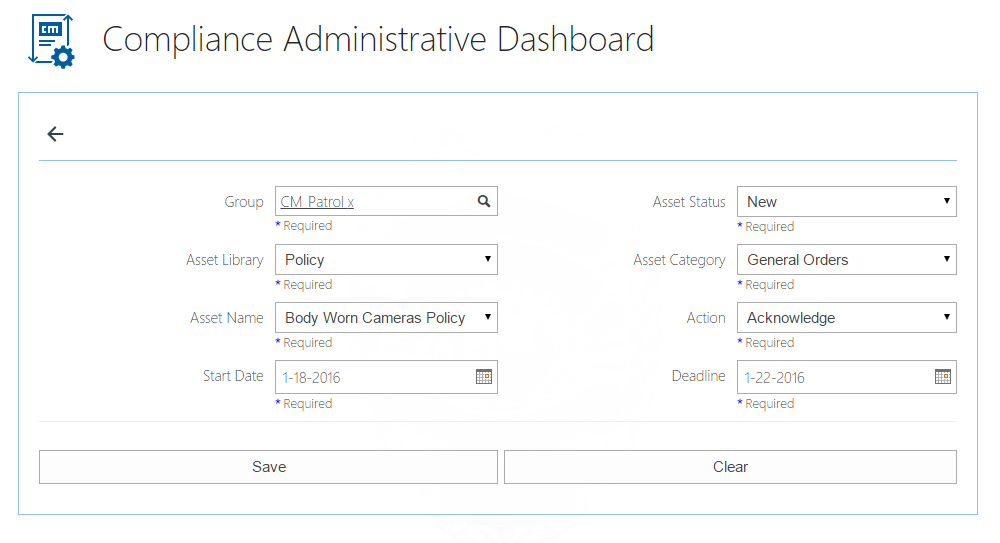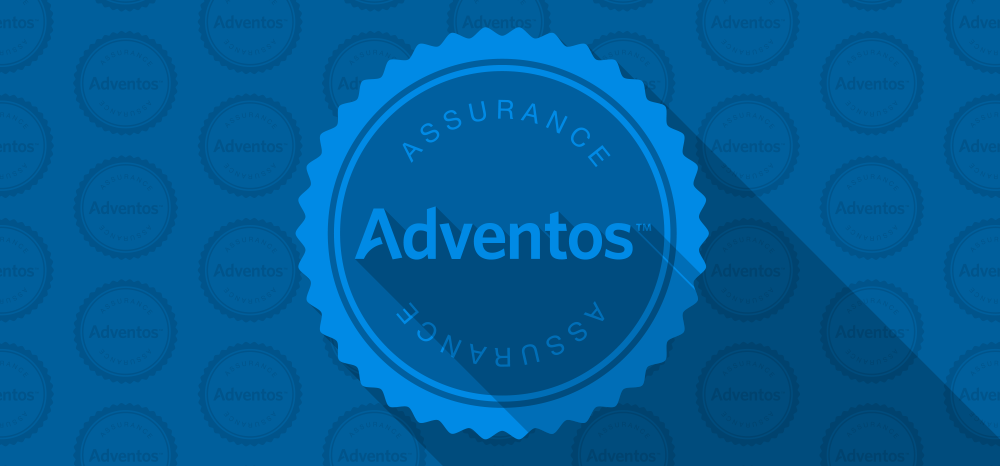 The SmartForce™ Agency Management System makes it easier to manage the challenges of the implementation of a Body Worn Camera program. With SmartForce™ there will be less effort, less frustration, and implementation will be faster. Regardless of the camera hardware system chosen for your agency, you may experience difficulties in the following areas:
The SmartForce™ Agency Management System makes it easier to manage the challenges of the implementation of a Body Worn Camera program. With SmartForce™ there will be less effort, less frustration, and implementation will be faster. Regardless of the camera hardware system chosen for your agency, you may experience difficulties in the following areas:
1. Policy compliance
2. Reporting on response to resistance (a.k.a. Use of Force)
3. Citizen complaint tracking
4. Training management
5. Video storage
6. Open records requests
7. Public Information Officer responsibilities
Policy Compliance
PERF, the COPS Office, and departments across the United States have shared best practices for Body Worn Camera Program policies. What is yet to be solved is a way to systematically manage the receipt and acknowledgement of these policies with appropriate testing and auditing. A prominent police department received negative coverage in the media for completing a pilot program where the results of the test where inconclusive. This was because 80% of the time the officers did not turn on their cameras, even though it was policy to do so. An Agency Management System, like Adventos SmartForce™, streamlines policy drafting, submissions, auditing, and reporting, so department management can focus on policy shaping rather than wondering if officers are not in compliance.
Response to Resistance
Most departments report Use of Force information using hand written forms or with legacy internal affairs software which often don’t account for what truly matters during a Use of Force incident. SmartForce™ is not only capable of including video evidence in an actual report, but it is also capable of reporting on the chronological sequence of events. SmartForce™ handles reporting when multiple officers and multiple parties are involved, it provides a comprehensive view of what type of responses to resistance are effective, and what de-escalation techniques were used. Response to Resistance management is critical in the context of a Body Worn Camera program.
Citizen Complaint Tracking
While the use of body worn cameras, as PERF states, “often improves the performance of officers as well as the conduct of the community members who are recorded”, departments operate in a world where bystanders can capture video and file a complaint. When a citizen complaint is filed, SmartForce™ makes it easier to appropriately route the report through a chain of command and resolve it in a seamless and efficient way. SmartForce™ will save your department time as you handle citizen complaints. It will also improve morale and create a culture of accountability among your officers.
Training Management
A recent Los Angeles Times article blames rising accidental firearm discharges by deputies on the lack of proper training and policy. Most training academies handle field training officer reports via paper forms and training is reported and analyzed by hand as well. SmartForce™ streamlines the recording of daily observation reports, training, and certifications across an entire department. As the complexity of managing Body Worn Camera programs grow, training and policy compliance are of paramount importance.
Video Storage
Video management and the capacity to store electronic files are a growing need. Some body worn camera vendors use closed and proprietary platforms, while others use the Microsoft Azure platform, which is CJIS compliant. The SmartForce™ solution runs on the Microsoft Government Cloud, is CJIS compliant, and allows for reports such as Response to Resistance or Complaints to include video evidence retrieved from body worn cameras. Having both a written report and video evidence together, a one stop shop for information, simplifies administration.
Open Records Requests
Managing the coordination required to respond to an Open Records Request is a monumental task. Most departments rely on manual processes to file, discover, categorize, and disclose the requested information. SmartForce™ centralizes the Open Records Request process adding visibility to key personnel in the process and ensuring the department meets all legal requirements.
Public Information Officer
The role of the Public Information Officer (PIO) is growing across police departments in the United States. Your PIO could be struggling to obtain needed information, in real time, in order to respond promptly to community requests. SmartForce™ is the only software solution that makes it possible for PIOs to work collaboratively with those that matter most, when time is of the essence.
Start your FREE Trial
Our Agency Management System fits the needs of any size police department. We offer a FREE trial so you can determine if SmartForce™ will deliver the required value before purchasing the product. Start your FREE trial at www.adventos.com.
Works Cited:
Article from a Web site:
Miller, Lindsay, Jessica Toliver, and Police Executive Research Forum. 2014. Implementing a Body-Worn Camera Program: Recommendations and Lessons Learned. Washington, DC: Ofce of Community Oriented Policing Services. http://www.policeforum.org/assets/docs/Free_Online_Documents/Technology/implementing%20a%20body-worn%20camera%20program.pdf
Article from a Web site:
Hamilton, Matt. “L.A. Sheriff’s Department blamed for rise in accidental gunshots by deputies.” Los Angeles Times, 16 Dec. 2015.
http://www.latimes.com/local/lanow/la-me-ln-los-angeles-sheriff-training-handgun-accidental-discharges-20151216-story.html











